Findings from a major Europe-wide study into cormorant-fishery conflicts have been published, providing one of the most detailed ecological and socio-economic investigations of these fish-eating birds, their impacts and implications for their management. Read more in
CEH news and view photos from the project below.
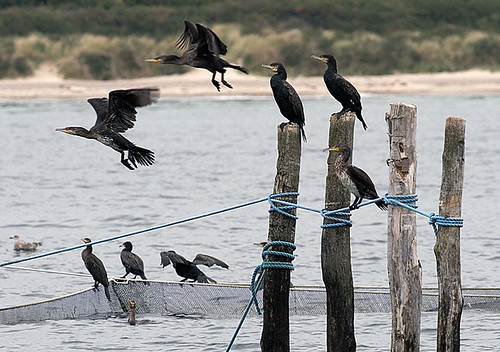 |
The INTERCAFE study, chaired by David Carss of CEH, included the first
pan-European census of the number and distribution of cormorants in summer
and wintertime. Cormorant numbers across Europe have been increasing,
particularly within the last three decades.
Photo: INTERCAFE |
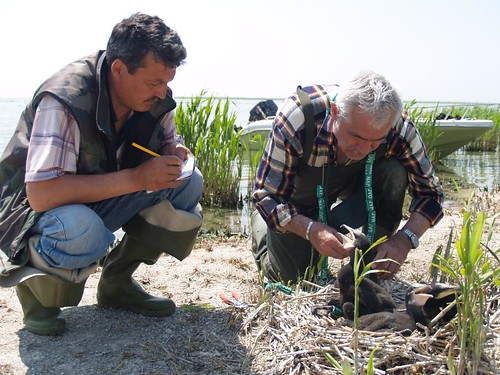 |
Researchers carry out an INTERCAFE field survey (c) INTERCAFE. The
INTERCAFE reports include an overview of field techniques and standard
research methods for cormorants, fishes and the interactions between them.
Photo: INTERCAFE |
|
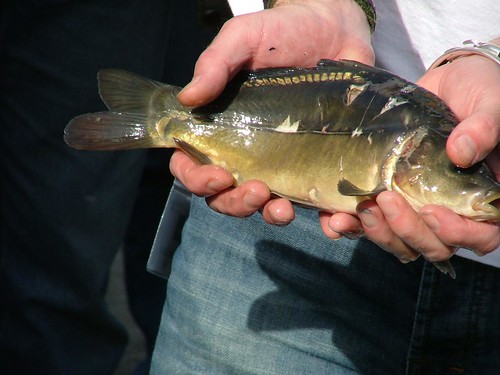 |
A carp damaged by a cormorant. The INTERCAFE reports contain analysis
of cormorant-fisheries conflicts at carp-rearing ponds - an important freshwater
fishery sector across continental Europe - where problems at individual sites
can be caused by birds which breed as far as 2000km away.
Photo by Robert Gwiazda |
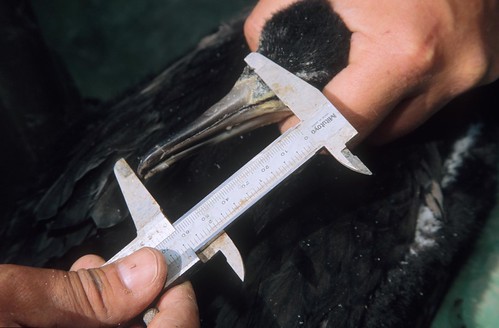 |
The project drew together researchers from a number of disciplines, including
bird-related and broader ecology disciplines, fisheries science and management,
sociology, social anthropology and international law, together with experts on
fisheries production, harvest and management, local interest groups and
international policy-makers.
Photo: INTERCAFE |
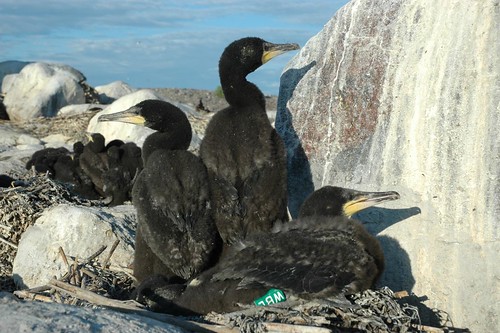 |
The project involved 70 researchers from 30 countries, as well as hundreds
of volunteers of the Wetlands International-IUCN Cormorant Research Group.
Photo by Stef van Rijn. |
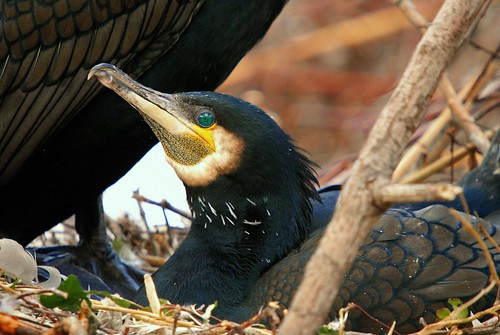 |
| Photo of a cormorant by Josef Trauttmansdorff |
More information
CEH News:
Europe-wide studies into cormorant-fishery conflicts published
INTERCAFE reports
Flickr set of photos from INTERCAFE project







No comments:
Post a Comment